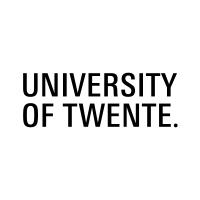In short
- There is a shortage of ‘green’ rainwater above land
- Researchers at the University of Twente identified the scarcity of this green water
Global Goal

Ground and river water reserves are declining worldwide. Research from the University of Twente shows that limits to green water usage have been reached in many regions, and have exceeded in various European, Central American, Middle Eastern and South Asian countries.
Rainfall refills rivers and groundwater reserves and is partly used directly by plants, afterwards flowing back to the atmosphere by evaporating. The latter is called green water, and it is the most important water source to produce food, feed, fibre (for clothing), timber, and bioenergy. Some biodiversity is fully dependent on this green water, resulting in tension with the growing demand for biomass in the economy while the amount of green water is limited.Rainfall refills rivers and groundwater reserves and is partly used directly by plants, afterwards flowing back to the atmosphere by evaporating. The latter is called green water, and it is the most important water source to produce food, feed, fibre (for clothing), timber, and bioenergy. Some biodiversity is fully dependent on this green water, resulting in tension with the growing demand for biomass in the economy while the amount of green water is limited.
The current debate on water scarcity is heavily skewed since it leaves unnoticed the bulk of water availability––which is green. To understand how freshwater scarcity constrains the production of vital goods, the researchers estimated the current usage of green water for biomass production and compared it with the availability of green water. The amount of available green water is limited and largely present in unreachable or unproductive regions, or regions that are essential to biodiversity conservation.
Rainforests are among the few places in the world with large unused green water flows, however, due to population growth, increased consumption and growing biomass demand exactly those locations are at most at risk to be used for coping with the human demand. “To avoid this, we need to change our consumption patterns. By lowering our demand, we reduce the need to take green water from nature”, says Joep Schyns.
The paper ‘Limits to the world’s green water resources for food, feed, fiber, timber, and bioenergy’ by Joep F. Schyns, Arjen Y. Hoekstra, Martijn J. Booij, Rick J. Hogeboom, and Mesfin M. Mekonnen has been published in the Proceedings of the National Academy of Sciences of the USA (PNAS).
To get in touch with smart water solutions experts you can call or mail Janneke van den Elshout, press officer at the University of Twente.
Contact information

(press officer) https://personen.utwente.nl/j.g.m.vandenelshout
Global Goals






